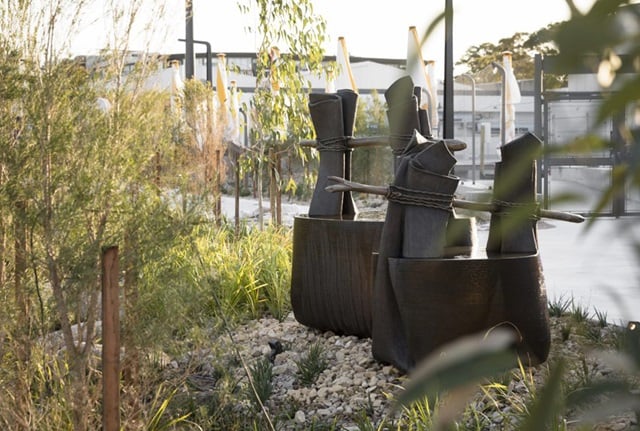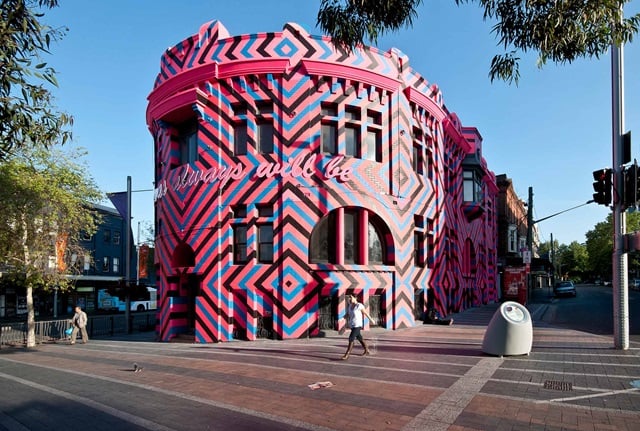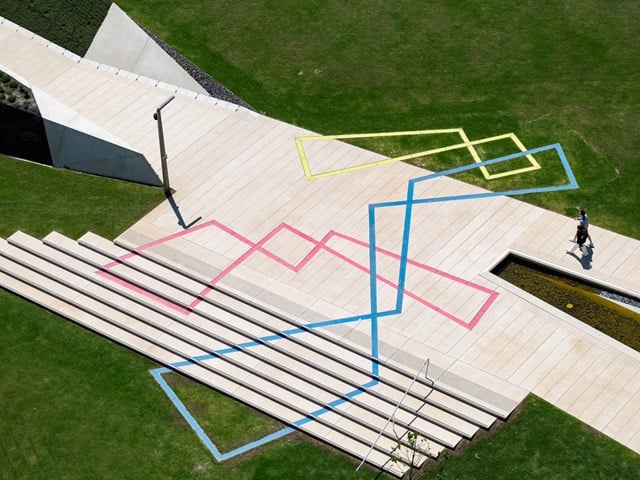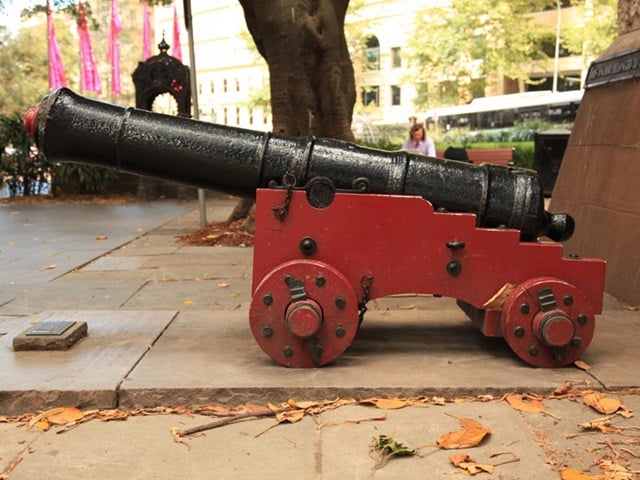


Bangala speaks of the enduring presence of Eora culture within Country and of the continued importance of water on this site.
– Aunty Julie Freeman
Artwork description
Bangala, a public artwork by Jonathan Jones and Aboriginal Elder Aunty Julie Freeman, is at Green Square’s Gunyama Park Aquatic and Recreation Centre. The work provides close links to the area’s history and traditional culture.
Two oversize bronze cast bangala, or Eora bark water carriers, in a garden setting make up the site-specific installation.
The public artwork concept was integrated into the centre’s design from the start of the planning stages. It has been created in close collaboration between the artist, architects and landscape architects, along with Aboriginal Elders and heritage consultants.
– Jonathan Jones
Artist statement
Bangala is based on the bangala, an Eora vessel. Customarily made from bark or the frond of a Bangalow palm, bangala are handheld containers used for carrying and maintaining fresh water in coastal environments and are shared up and down the east coast of Australia. Today, several key Aboriginal traditional owners, including Aunty Julie Freeman, continue to hold the knowledge for how to make bangala. This artwork speaks of the enduring presence of Eora culture within Country and of the continued importance of water on this site.
The underlying land of Green Square was originally a series of sand dunes and swamps that led into the Cooks River and beyond, into Kamay or Botany Bay. But in the early 1900s many parts of these wetlands were drained to make way for water-reliant industries. Today, Gunyama Park retains its aquatic memory, with large drainage systems still passing under the site. Gunyama Park Aquatic and Recreation Centre recalls the traditional landscape, returning the site to a place of water and recreation.
Artists
Aunty Julie Freeman is a Gorawarl/Jerrawongarla traditional owner for South Sydney and the south coast of NSW. She is a recognised artist, cultural leader and storyteller, with strong knowledge relating to the region’s environmental system.
Artist Jonathan Jones is a member of the Wiradjuri and Kamilaroi nations of south-east Australia, and is based in Sydney. He creates site-specific installations and interventions to explore Indigenous practices, relationships and ideas.
Aunty Julie and Jonathan have exhibited and worked together for many years.




